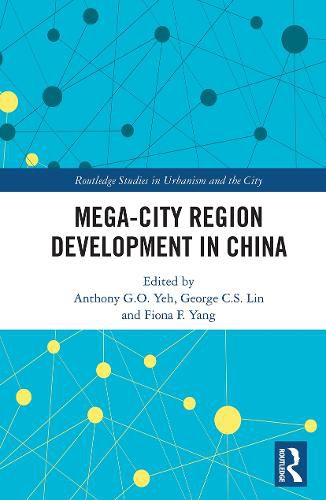Readings Newsletter
Become a Readings Member to make your shopping experience even easier.
Sign in or sign up for free!
You’re not far away from qualifying for FREE standard shipping within Australia
You’ve qualified for FREE standard shipping within Australia
The cart is loading…






This book sheds light on the mega-city region development in China as a new form of urbanization which plays a crucial role in the economic development of the country. It examines the challenges faced by the mega-city regions and opens up avenues for debates and further research.
Economic reform of 1978 has led to an unprecedented growth in the population and economic development of China. A large portion of this increased urban population and the corresponding economic growth has been concentrated in the mega-city regions, such as Beijing-Tianjin-Hebei (BTH), Yangtze River Delta (YRD) and Pearl River Delta (PRD). These three mega-city regions have less land but more people and thus higher economy, resulting in various issues and challenges faced by these regions. These challenges pertain to the socio-economic development, transport, environment, governance and development strategy, which this book explores through case studies of Guangdong-Hong Kong-Macao Greater Bay Area, Beijing-Tianjin-Hebei and Wuhan. This book also explains and analyses the economy, migration processes, transport development, environmental conditions and governance of the mega-city regions of China.
With an overview of China’s rapid urbanisation and the consequent economic growth, this book provides an essential understanding of related issues in order to establish appropriate strategies and policies to sustain the process of mega-city region development.
$9.00 standard shipping within Australia
FREE standard shipping within Australia for orders over $100.00
Express & International shipping calculated at checkout
This book sheds light on the mega-city region development in China as a new form of urbanization which plays a crucial role in the economic development of the country. It examines the challenges faced by the mega-city regions and opens up avenues for debates and further research.
Economic reform of 1978 has led to an unprecedented growth in the population and economic development of China. A large portion of this increased urban population and the corresponding economic growth has been concentrated in the mega-city regions, such as Beijing-Tianjin-Hebei (BTH), Yangtze River Delta (YRD) and Pearl River Delta (PRD). These three mega-city regions have less land but more people and thus higher economy, resulting in various issues and challenges faced by these regions. These challenges pertain to the socio-economic development, transport, environment, governance and development strategy, which this book explores through case studies of Guangdong-Hong Kong-Macao Greater Bay Area, Beijing-Tianjin-Hebei and Wuhan. This book also explains and analyses the economy, migration processes, transport development, environmental conditions and governance of the mega-city regions of China.
With an overview of China’s rapid urbanisation and the consequent economic growth, this book provides an essential understanding of related issues in order to establish appropriate strategies and policies to sustain the process of mega-city region development.